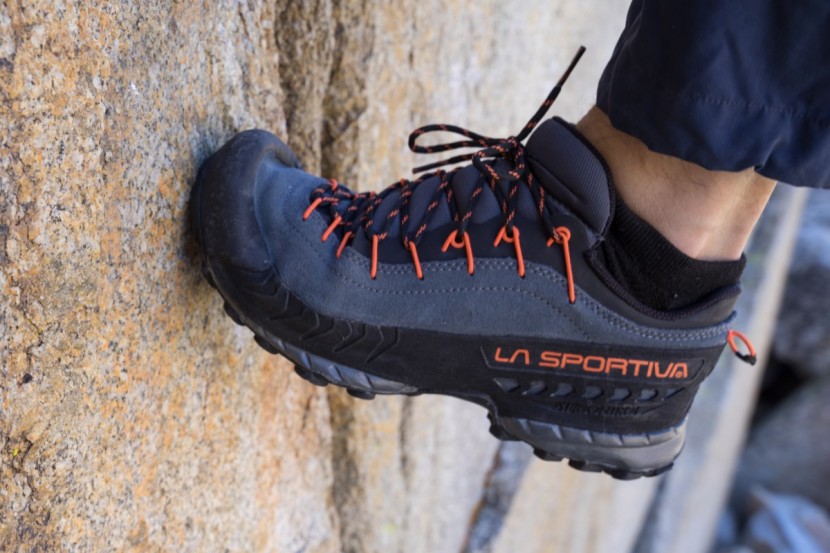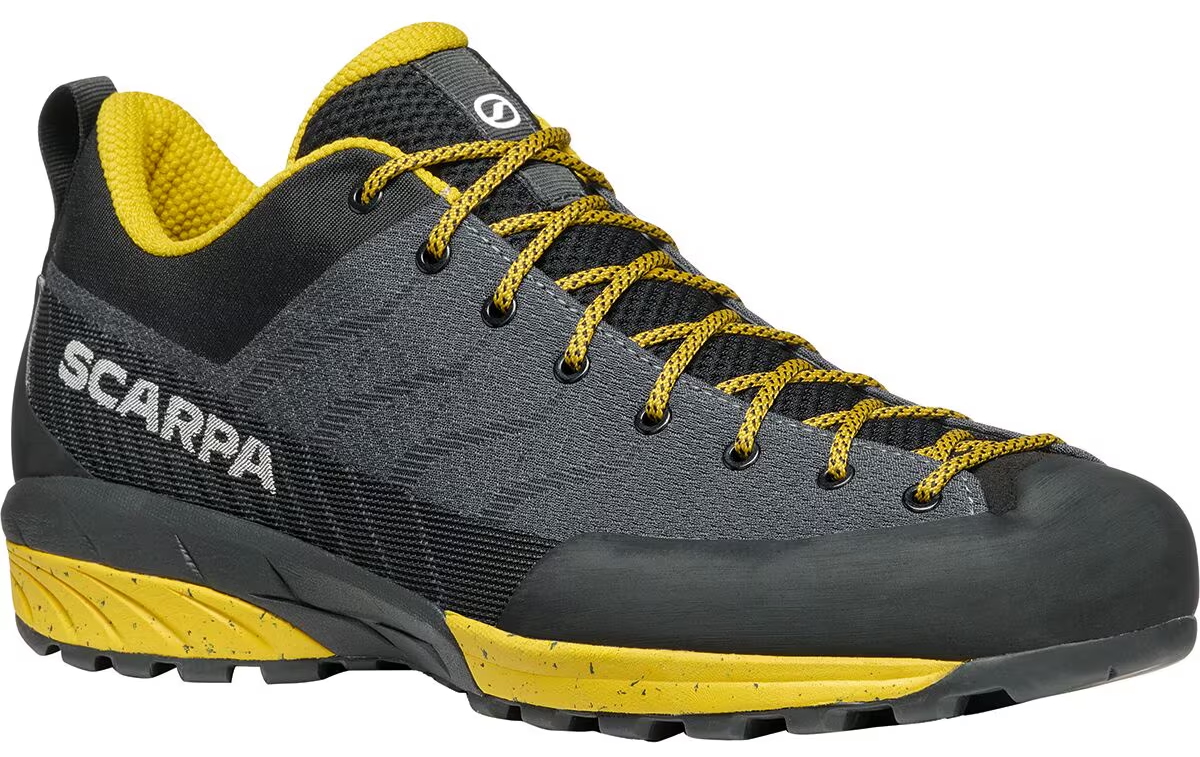What Are Approach Shoes? The Ultimate Beginner's Guide
- Posted on
- 0

If you're new to climbing or outdoor adventures, you've probably heard experienced climbers mention "approach shoes" and wondered what makes them different from regular sneakers or hiking boots. This comprehensive beginner's guide will demystify approach shoes, explaining everything you need to know about these specialized pieces of footwear that have become essential gear for climbers, scramblers, and outdoor enthusiasts worldwide.
What Are Approach Shoes? The Basics Explained

Approach shoes are specialized outdoor footwear designed to bridge the gap between hiking boots and climbing shoes. Originally created for the "approach" to climbing routes—the often technical hike required to reach the base of a climb—these versatile shoes have evolved into multi-purpose outdoor footwear suitable for various activities.
Think of approach shoes as the Swiss Army knife of outdoor footwear. They combine the sticky rubber and precision of climbing shoes with the comfort and walkability of hiking shoes, creating a hybrid that excels in mixed terrain where you need both hiking capability and climbing performance.
The name "approach shoes" comes from their primary intended use: navigating the approach to climbing routes. Many climbing areas require hikers to scramble over loose rock, navigate steep trails, or even climb short sections to reach the base of longer routes. Traditional hiking boots are too clunky for these technical sections, while climbing shoes are too uncomfortable for extended hiking.
The History and Evolution of Approach Shoes
Approach shoes emerged in the 1980s when climbers began demanding footwear that could handle the increasingly technical approaches to remote climbing areas. Early alpinists and rock climbers were frustrated with having to choose between comfortable hiking boots that couldn't handle technical terrain and precise climbing shoes that were torture to walk in.
The first approach shoes were relatively simple designs that borrowed climbing rubber technology and applied it to a more hiking-oriented shoe structure. Over the decades, approach shoes have evolved significantly, incorporating advanced materials, improved construction techniques, and specialized features that make them indispensable for modern outdoor adventures.
Today's approach shoes represent decades of refinement and innovation, offering performance that early pioneers could only dream of while maintaining the versatility that made the concept popular in the first place.
Key Features That Define Approach Shoes
Sticky Rubber Soles

The most distinctive feature of approach shoes is their use of climbing-grade rubber compounds. Unlike the harder rubber used in traditional hiking boots, approach shoes employ the same high-friction materials found in climbing shoes. These rubber compounds, often sourced from companies like Vibram, provide exceptional grip on rock surfaces, allowing you to confidently navigate technical terrain.
The rubber typically extends beyond just the sole, wrapping around the toe area and sometimes the heel, creating "climbing zones" that enable you to use your feet more like climbing shoes when necessary.
Low-Profile Design

Approach shoes feature a lower profile than hiking boots, bringing your foot closer to the ground for better sensitivity and precision. This design allows you to feel the terrain beneath your feet, crucial for precise foot placement on technical sections.
The low profile also reduces the shoe's overall bulk, making them less likely to catch on rocks or interfere with precise movements during scrambling or easy climbing.
Moderate Downturn

Many approach shoes incorporate a slight downturn—a curved shape that points the toes downward. This feature, borrowed from climbing shoe design, improves your ability to "edge" on small holds and provides better performance on steep terrain.
The downturn in approach shoes is much more moderate than in climbing shoes, maintaining comfort for walking while providing some performance benefits for technical sections.
Durable Construction
Approach shoes are built to withstand the rigors of rocky terrain. They typically feature reinforced toe caps, robust stitching, and materials chosen for their ability to resist abrasion from constant contact with rock surfaces.
This durability is essential because approach shoes often encounter sharp rocks, coarse surfaces, and challenging conditions that would quickly destroy regular sneakers or lightweight hiking shoes.
Comfortable Fit
Unlike climbing shoes, which prioritize performance over comfort, approach shoes are designed to be worn comfortably for extended periods. They typically fit more like regular shoes, with enough room for your toes and adequate padding for all-day wear.
When and Where to Use Approach Shoes
Perfect Situations for Approach Shoes
Technical Approaches: When the hike to your climbing destination involves scrambling, loose rock, or short climbing sections, approach shoes provide the grip and precision you need while remaining comfortable for the hiking portions.
Mixed Terrain Adventures: For activities that combine hiking, scrambling, and easy climbing, approach shoes eliminate the need to carry multiple types of footwear.
Via Ferrata Routes: These protected climbing routes are ideal for approach shoes, as they require good grip and precision but aren't technical enough to warrant climbing shoes.
Crag Exploration: When exploring new climbing areas or moving between routes at established crags, approach shoes provide the versatility to handle varied terrain.
Light Scrambling: For Class 2 and easy Class 3 terrain where hiking boots feel too clunky but the terrain is too technical for regular sneakers.
Multi-Pitch Descents: Many multi-pitch climbing routes require walking or scrambling during the descent, making approach shoes ideal for the post-climb phase of your adventure.
When Approach Shoes Might Not Be Ideal
While approach shoes are incredibly versatile, they're not perfect for every situation. Very long hiking approaches on well-maintained trails might be more comfortable in traditional hiking boots. Extremely technical climbing (typically 5.8 and above) usually requires the precision and aggressive fit of dedicated climbing shoes.
How Approach Shoes Differ from Other Footwear
Approach Shoes vs. Regular Sneakers
Regular sneakers or athletic shoes might seem similar to approach shoes, but they lack the specialized rubber compounds and construction needed for technical terrain. The rubber used in sneakers is typically harder and designed for pavement or gym floors, not rock surfaces. Additionally, sneakers usually lack the durability and protection needed for rocky outdoor environments.
Approach Shoes vs. Hiking Boots
Hiking boots prioritize comfort, support, and protection for long-distance hiking with heavy loads. They typically feature higher ankle support, more cushioning, and harder rubber soles optimized for trail durability rather than rock grip. Approach shoes sacrifice some of this comfort and protection for better performance on technical terrain.
Approach Shoes vs. Climbing Shoes
Climbing shoes are designed purely for vertical performance, featuring aggressive shapes, extremely sticky rubber, and tight fits that maximize precision and grip. They're uncomfortable for walking and lack the durability needed for approaches. Approach shoes balance some climbing performance with the comfort and durability needed for hiking.
For a detailed comparison of these different footwear types, check out our comprehensive guide: Approach Shoes vs Climbing Shoes vs Hiking Boots: Complete Comparison Guide 2025.
Choosing Your First Pair of Approach Shoes
Sizing Considerations
Approach shoes typically fit similar to your regular shoe size, though many people prefer them slightly snugger than hiking boots for better precision during technical sections. Unlike climbing shoes, you shouldn't need to size down significantly—comfort for extended wear is important.
When trying on approach shoes, ensure you have enough room for your toes to move but not so much that your foot slides around inside the shoe during precise movements.
Gender-Specific Options
Modern approach shoe manufacturers recognize that men and women have different foot shapes and biomechanical needs. Men's approach shoes are typically built on lasts designed for male foot shapes, while women's approach shoes feature construction optimized for female feet, including narrower heels, different arch placement, and adjusted proportions.
Features to Look For
Quality Rubber: Look for approach shoes that use climbing-grade rubber compounds from reputable manufacturers like Vibram. The rubber should feel tacky to the touch and provide good grip even on smooth surfaces.
Comfortable Fit: Since you'll be wearing these shoes for extended periods, comfort is crucial. Look for adequate padding, good arch support, and a shape that matches your foot.
Durable Construction: Check for reinforced high-wear areas, quality stitching, and materials that can withstand contact with rough rock.
Caring for Your Approach Shoes
Cleaning and Maintenance
Regular cleaning helps maintain the performance of your approach shoes' rubber soles. After each use, brush off dirt and debris, paying special attention to the sole. For deeper cleaning, use a soft brush and mild soap to remove accumulated grime that can reduce grip.
Extending Shoe Life
Rotate between multiple pairs when possible to allow shoes to fully dry between uses. Store your approach shoes in a cool, dry place away from direct sunlight, which can degrade rubber compounds over time.
When to Replace
Monitor the condition of your approach shoes' soles—when the rubber becomes smooth or worn through to underlying materials, it's time for replacement. Some high-end approach shoes can be resoled, extending their useful life significantly.
Common Beginner Mistakes to Avoid
Choosing the Wrong Size: Unlike climbing shoes, approach shoes shouldn't be painfully tight. A proper fit allows for comfortable all-day wear while providing adequate precision for technical terrain.
Expecting Climbing Shoe Performance: While approach shoes offer good grip and some climbing capability, they're not substitutes for climbing shoes on technical routes. Understand their limitations and bring appropriate footwear for your planned activities.
Neglecting Break-In Period: New approach shoes may require a brief break-in period. Start with shorter, less technical adventures to ensure comfort before attempting longer or more challenging routes.
Ignoring Terrain Appropriateness: While versatile, approach shoes aren't perfect for every situation. Very long hiking approaches might be more comfortable in hiking boots, while technical climbing usually requires climbing shoes.
Expanding Your Knowledge
As you become more comfortable with approach shoes and outdoor activities, you may want to explore the different categories available. Our guide on What Are the Different Types of Approach Shoes? Technical vs Casual Explained delves deeper into the various styles and their specific applications.
Conclusion: Your Gateway to Adventure
Approach shoes represent an excellent entry point into technical outdoor activities, offering the versatility and performance needed to safely explore mixed terrain. They're particularly valuable for beginners because they open up access to adventures that would be difficult or dangerous in regular sneakers while remaining comfortable enough for extended wear.
Understanding what approach shoes are and how they differ from other footwear types empowers you to make informed decisions about your outdoor gear. Whether you're planning your first scrambling adventure, exploring local crags, or beginning a climbing journey, approach shoes provide the foundation for safe and enjoyable outdoor experiences.
Ready to find your first pair? Explore our comprehensive approach shoes collection to discover the perfect balance of performance and comfort for your outdoor adventures. From technical models for challenging terrain to casual options for everyday wear, the right approach shoes will become an indispensable part of your outdoor gear arsenal.
Remember, the best approach shoes are the ones that match your specific needs, fit properly, and inspire confidence on whatever terrain your adventures take you. Start with a versatile pair that suits your current activity level, and don't be afraid to upgrade as your skills and ambitions grow.

Comments
Be the first to comment...